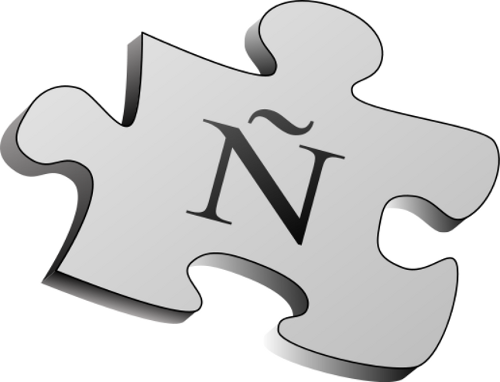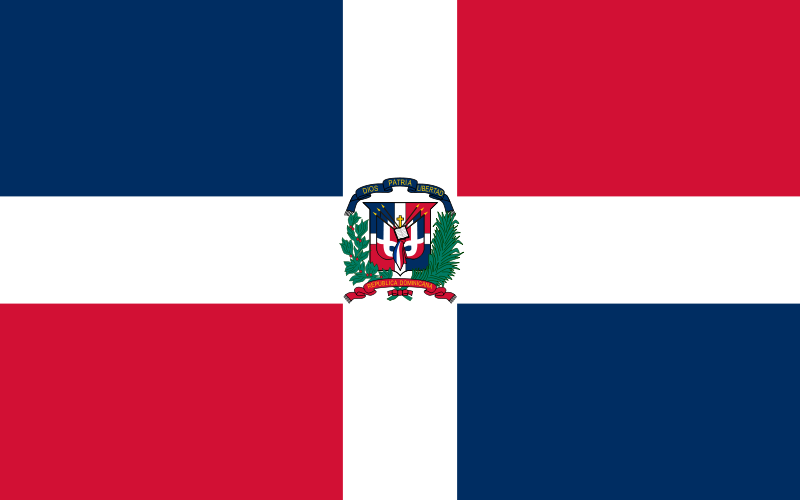Section outline
-
ANTELOPE VALLEY HIGH SCHOOL DISTRICT
QUARTZ HILL HIGH SCHOOL
"A California Distinguished School"
SPANISH 1
Teacher: Ms. Chacon
Phone: (661) 718-3100, ext. 420
Office Hours: after school, by appointment only.
E-mail: nchacon@avhsd.org (parents), prof_chacon@hotmail.com (students)
COURSE SYLLABUS
Course Description:
This course consists of a series of linguistic activities and cultural topics which enables the students to communicate about daily activities at a survival level. At the end of this course, the students will be able to understand, speak, read and write about high frequency expressions and phrases and make themselves understood by the teacher and sympathetic Spanish speakers.
National Foreign Language Content Standards:
Communication Standards
1.1 Engage in conversations, provide and obtain information, express feelings and emotions, and exchange ideas.
1.2 Understand and interpret written and spoken language on a variety of topics.
1.3 Present information, concepts, and ideas to an audience of listeners or readers on a variety of topics.
Cultures Standards
2.1 Demonstrate an understanding of the relationship between the practices and perspectives of the culture studied.
2.2 Demonstrate an understanding of the relationship between the products and perspectives of the culture studied.
Connections Standards
3.1 Reinforce and further their knowledge of other disciplines through the foreign language.
3.2 Acquire information and recognize the distinctive viewpoints that are only available through the foreign language and its cultures.
Comparisons Standards
4.1 Demonstrate understanding of the nature of language through comparisons of the language studied and their own.
4.2 Demonstrate understanding of the concept of culture through comparisons of the cultures studied and their own.
Communities Standards
5.1 Use the language both within and beyond the school setting.
5.2 Show evidence of becoming life-long learners by using the language for personal enjoyment and enrichment.
Student Responsibilities:
1. 10 % Classwork
2. 10 % Homework
3. 10 % Notes
4. 70 % Exams
Student Evaluation:
1. Classwork
Classwork assignments are to be turned in at the end of each class for
credit. It is very important that you keep track of your work and stay on task
during class time.
2. Homework
Although all homework will be collected on Fridays, students are required to complete homework every night. Assignments will be stamped in class every day. You will receive credit for whatever number of assignments you turn in at the end of the week. In order to receive credit, assignments need to be stamped and complete, this includes writing out all the questions and answers.
3. Cornell Notes
All students are required to take notes in class and review and annotate those notes at home when indicated. Notes are an essential part of the class and will be scored.
4. Exams
There will be at least one exam every week. You are expected to prepare at home and be responsible for your own learning. You should keep a running study guide so that you are always ahead of the game. Exams will be given in a variety of formats and will evaluate your skills in writing, reading, listening and speaking.
-

WELCOME TO SPANISH 1!
Why study Spanish?
- Discover the world. More than 400 million people around the globe speak Spanish. Spanish is now the third most-used language on the internet. People who speak both Spanish and English can communicate with people from all around the globe, no matter where they find themselves.
- Explore your community. Inside the United States, Spanish is by far the most widely spoken language after English. When you start to look and listen for it, you will quickly realize that Spanish is all around you - on the television, on the radio, and in magazines and newspapers. Learning Spanish will help you communicate and interact with the rapidly growing communities of Spanish-speakers around you.
- Experience a new perspective. Learning a language can open your eyes to a whole new world of ideas and insights. And as you learn about other cultures, you gain a better perspective on your own.
- Create career possibilities. Knowing Spanish opens many doors. If you speak Spanish fluently, you can work for international and multinational companies anywhere in the Spanish-speaking world.
What is VOCABULARY?
Vocabulary is a basic building block for learning a foreign language. By learning just a few words, you can start to communicate in Spanish right away! You will probably find it easier to understand words you hear or read than it is to use them yourself. But with a little practice, you will start to produce the right words in the right context. Soon you will be able to carry on conversations with other Spanish-speakers.
How do I study VOCABULARY?
- First Steps. Read all of the new words in blue on the Vocabulary presentation page in your textbook. Point to each word as you say it out loud.
- Be Creative. Make flashcards with your new vocabulary words. You could also draw pictures of the words on the back of the flashcards. Group vocabulary words by theme. Add other words that fit the categories you've learned.
- Make It Personal. Use vocabulary words to write original sentences. Label everyday items in Spanish. Create reminders for difficult words. See it, and say it to yourself!
- Practice Makes Perfect. Say your vocabulary words out loud and repeat each word several times. Write each word five times, keeping its meaning in mind.
- Create Your Own System. Practice a little bit every day. Many short sessions are better than one long one. Focus on the words that are hardest for you. Keep a vocabulary notebook and update it regularly.

What is GRAMMAR?
Some people think of grammar as the rules of a language, rules that tell you the "correct" way to speak a language. For instance, why do you say big red house, not red big house? Why do you say how much money do you have instead of how many money? If English is your first language, you probably don't think about the rule. You make the correct choice instinctively because it sounds right. Non-native speakers of English have to learn the rules. As you begin your study of Spanish, you will need to learn the grammar rules of Spanish.How do I study GRAMMAR?
Grammar helps you to communicate. Using the right tense makes it clear when something happens. Using subject pronouns lets you know who is performing the action. Using correct grammar when speaking Spanish will help you communicate successfully with native speakers of Spanish.
- Read the English Grammar Connection before each grammar explanation. Think about how you use the same type of grammar in English. Understanding your own language will help you to better understand Spanish.
- Practice the new forms that you are learning. Completing the practice activities in your student book and workbook will help you to learn the correct way to say things.
- Use the Spanish you know as often as you can. After all, that's how you learned to speak English, by hearing and speaking it every day.
-

ClassZone.Com
Online Review
- Flashcards
- Self-check Quizzes
- Get Help Online
- Games
- Downloadable audio and video files
- Leveled Practice
- Animated Grammar
- Games
- Email or Print Session Reports
- Access code: 3277612-10
-
Lección Preliminar: ¡Hola!
pp 1-27
Nueva York
New York City lies about 100 miles south of Boston at the mouth of the Hudson River with more than eight million residents. It is divided into five boroughs. Most Americans are familiar with their names: the Bronx, Brooklyn, Queens, Staten Island, and Manhattan.
Approximately one in eight people in the U.S. is of Latin American origin. New York City has the highest Spanish-speaking population of any U.S. city. Puerto Ricans make up almost 40 percent of the Latin American population in New York City.
Objectives
- greet people and say goodbye, pp 2-5
- introduce yourself and others, pp 6-9
- ask and say how to spell names, pp 10-11
- say where you are from, pp 12-15
- exchange phone numbers, pp 16-17
- say what day of the week it is, pp 18-19
- describe the weather, pp 20-21
- respond to classroom instructions, pp 22-24
Vocabulary
- Spanish-speaking countries, p 13
- numbers from zero to ten, p 16
- days of the week, p 18
- vocabulario, p 25
Assignments
- Vocabulary - write each word 5 times
- Textbook, acts 1-25, pp 1-24
- Textbook, acts 1-4, pp 26-27
-
UNIDAD 1: Un rato con
los amigos
pp 28-81
Estados Unidos
Población: 293.655.404
Población de ascendencia hispana: 41.322.070
Comida latina: el sándwich cubano, burritos, fajitas
Gente famosa: Sandra Cisneros (escritora), Gloria Estefan (cantante), Eva Mendes (actriz), Eloy Rodríguez (bioquímico)
Lección 1: ¿Qué te gusta hacer?
pp 30-53
Objectives
- talk about activities
- tell where you are from
- say what you like and don't like
Vocabulary
- weather expressions, p 20
- vocabulario, p 51
Grammar
- subject pronouns and SER, p 37
- nota gramatical: "de", p 38
- GUSTAR with an infinitive, p 42
Assignments
- Vocabulary - write each word 5 times
- Textbook, acts 1-21, pp 32-47
- Textbook, acts 1-5, pp 52-53
- Workbook, vocabulary, pp 1-3
- Workbook, grammar, pp 4-9
- Workbook, reading, pp 15-17
- Reteach and Practice, vocabulary, pp 29-31
- Reteach and Practice, grammar, pp 32-37
- Reteach and Practice, "¿Recuerdas?", p 38
Lección 2: Mis amigos y yo
pp 54-81
Objectives
- describe yourself and others
- identify people and things
Vocabulary
- after-school activities, p 32
- snack foods, p 33
- vocabulario, p 75
Grammar
- nota gramatical: "ser", p 58 and p 37
- definite and indefinite articles, p 61
- GUSTAR with an infinitive, p 42
- noun-adjective agreement, p 66
Assignments
- Vocabulary - write each word 5 times
- Textbook, acts 1-14, pp 58-68
- Textbook, acts 1-4, pp 76-77
- Workbook, vocabulary, pp 24-26
- Workbook, grammar, pp 27-32
- Workbook, reading, pp 38-40
- Reteach and Practice, vocabulary, pp 39-41
- Reteach and Practice, grammar, pp 42-47
- Reteach and Practice, "Recuerdas?", pp 48-50
Printables
- talk about activities
-
UNIDAD 2: ¡Vamos a la escuela!
pp 82-135
México
Población: 104.959.594
Capital: México, D.F. (Ciudad de México)
Moneda: el peso mexicano
Comida típica: tortillas, tacos, enchiladas
Gente famosa: Carlos Fuentes (escritor), Salma Hayek (actriz), Mario Molina (químico), Thalía (cantante)
Lección 1: Somos estudiantes
pp 84-107
Objectives
- talk about daily schedules
- ask and tell time
- say what you have and have to do
- say what you do and how often you do things
Vocabulary
- after-school activities, p 32
- days of the week, p 18
- numbers from 11-100, p 87
- vocabulario, p 105
Grammar
- nota gramatical: "numbers", p 88
- nota gramatical: "telling time", p 90
- nota gramatical: "expressions of frequency", p 93
- the verb TENER, p 91
- present tense of -ar verbs, p 96
Assignments
- Vocabulary - write each word 5 times
- Textbook, acts 1-15, pp 88-98
- Textbook, acts 1-4, pp 106-107
- Workbook, vocabulary, pp 51-52
- Workbook, grammar, pp 53-58
- Workbook, reading, pp 64-66
- Reteach and Practice, vocabulary, pp 1-3
- Reteach and Practice, grammar, pp 4-9
- Reteach and Practice, "¿Recuerdas?", p 10
Lección 2: En la escuela
pp 108-135
Objectives
- describe classes and classroom objects
- say where things are located
- say where you are going
- talk about how you feel
Vocabulary
- class subjects, p 86
- telling time, p 90
- vocabulario, p 129
Grammar
- the verb ESTAR, p 115
- nota gramatical: "conjugated verb before subject to ask a question", p 117
- the verb IR, p 120
Assignments
- Vocabulary - write each word 5 times
- Textbook, acts 1-16, pp 112-122
- Textbook, acts 1-4, pp 130-131
- Workbook, vocabulary, pp 73-75
- Workbook, grammar, pp 76-81
- Workbook, reading, pp 87-89
- Reteach and Practice, vocabulary, pp 11-13
- Reteach and Practice, grammar, pp 14-19
- Reteach and Practice, "Recuerdas?", pp 20-22
Printables -
UNIDAD 3: Comer en familia
pp 136-189
Puerto Rico
Población: 3.897.960
Capital: San Juan
Moneda: el dólar estadounidense
Comida típica: pasteles, arroz con gandules, pernil
Gente famosa: Julia de Burgos (poetisa), Roberto Clemente (besibolista), Rosario Ferré (escritora), Luis Muñoz Marín (político)
Lección 1: Mi comida favorita
pp 138-161
Objectives
- talk about food and beverages
- ask questions
- say which foods you like and don't like
Vocabulary
- snack foods, p 33
- vocabulario, p 159
Grammar
- GUSTAR with an infinitive, p 42
- nota gramatical: "interrogative words", p 144
- the verb ESTAR, p 115
- nota gramatical: "the verb HACER", p 152
- telling time, p 90
- GUSTAR with nouns, p 145
- present tense of -er and -ir verbs, p 150
Assignments
- Vocabulary - write each word 5 times
- Textbook, acts 1-16, pp 142-152
- Textbook, acts 1-4, pp 160-161
- Workbook, vocabulary, pp 99-101
- Workbook, grammar, pp 102-107
- Workbook, reading, pp 113-115
- Reteach and Practice, vocabulary, pp 1-3
- Reteach and Practice, grammar, pp 4-9
- Reteach and Practice, "¿Recuerdas?", p 10-12
Lección 2: En mi familia
pp 162-189
Objectives
- talk about family
- ask and tell ages
- express possession
- give dates
- make comparisons
Vocabulary
- numbers 11-100, p 87
- after school activities, p 32
- describing others, p 58
- vocabulario, p 183
Grammar
- nota gramatical: "de to show possession", p 166
- nota gramatical: "the verb TENER", p 91
- nota gramatical: "giving dates", p 171
- possessive adjectives, p 169
- comparatives, p 174
Assignments
- Vocabulary - write each word 5 times
- Textbook, acts 1-13, pp 166-175
- Textbook, acts 1-4, pp 184-185
- Workbook, vocabulary, pp 122-124
- Workbook, grammar, pp 125-130
- Workbook, reading, pp 136-138
- Reteach and Practice, vocabulary, pp 13-15
- Reteach and Practice, grammar, pp 16-21
- Reteach and Practice, "Recuerdas?", pp 22-24
Printables -
UNIDAD 4: En el centro
pp 190-243
España
Población: 40.280.780
Capital: Madrid
Moneda: el euro
Comida típica: tortilla española, paella, gazpacho
Gente famosa: Carmen Amaya (bailadora), Francisco de Goya (artista), Ana María Matute (escritora), Severo Ochoa (bioquímico)
Lección 1: ¡Vamos de compras!
pp 192-215
Objectives
- talk about what clothes you want to buy
- say what you wear in different seasons
Vocabulary
- numbers from 11-100, p 87
- after-school activities, p 32
- vocabulario, p 213
Grammar
- nota gramatical: "the verb TENER", p 198
- stem-changing verbs (e to ie), p 199
- direct object pronouns, p 204
Assignments
- Vocabulary - write each word 5 times + sentences
- Textbook, acts 1-13, pp 196-206
- Textbook, acts 1-4, pp 214-215
- Workbook, vocabulary, pp 148-150
- Workbook, grammar, pp 151-156
- Workbook, reading, pp 162-164
- Reteach and Practice, vocabulary, pp 1-3
- Reteach and Practice, grammar, pp 4-9
- Reteach and Practice, "¿Recuerdas?", p 10-12
Lección 2: ¿Qué hacemos esta noche?
pp 216-243
Objectives
- describe places and events in town
- talk about types of transportation
- say what you are going to do
- order from a menu
Vocabulary
- vocabulario, p 237
Grammar
- nota gramatical: "present tense of -er verbs", p 220
- nota gramatical: "the verb IR", p 222
- stem-changing verbs (o to ue), p 223
- stem-changing verbs (e to i), p 228
- direct object pronouns, p 204
- TENER expressions, p 198
Assignments
- Vocabulary - write each word 5 times + sentences
- Textbook, acts 1-14, pp 220-230
- Textbook, acts 1-4, pp 238-239
- Workbook, vocabulary, pp 171-173
- Workbook, grammar, pp 174-179
- Workbook, reading, pp 185-187
- Reteach and Practice, vocabulary, pp 13-15
- Reteach and Practice, grammar, pp 16-21
- Reteach and Practice, "Recuerdas?", pp 22-24
Printables -
UNIDAD 5: ¡Bienvenido a nuestra casa!
pp 244-297
Ecuador
Población: 13.212.742
Capital: Quito
Moneda: el dólar estadounidense
Comida típica: locro, fritada, Llapingachos
Gente famosa: Alexandra Ayala Marín (periodista), Gilda Holst (escritora), Julio Jaramillo (cantante), Jefferson Pérez (atleta)
Lección 1: Vivimos aquí
pp 246-269
Objectives
- describe a house and household items
- indicate the order of things
- describe people and locations
Vocabulary
- location words, p 115
- colors, p 195
- clothing, p 194
- vocabulario, p 267
Grammar
- SER and ESTAR, p 253
- ordinal numbers, p 258
Assignments
- Vocabulary - write each word 5 times
- Textbook, acts 1-16, pp 250-260
- Textbook, acts 1-4, pp 268-269
- Workbook, vocabulary, pp 197-199
- Workbook, grammar, pp 200-205
- Workbook, reading, pp 211-213
- Reteach and Practice, vocabulary, pp 1-3
- Reteach and Practice, grammar, pp 4-9
- Reteach and Practice, "¿Recuerdas?", p 10-12
Lección 2: Una fiesta en casa
pp 270-297
Objectives
- plan a party
- talk about chores and responsibilities
- tell someone what to do
- say what you just did
Vocabulary
- interrogative words, p 140
- expressions of frequency, p 93
- vocabulario, p 291
Grammar
- nota gramatical: "ACABAR de + infinitive", p 284
- more irregular verbs, p 277
- affirmative tú commands, p 282
Assignments
- Vocabulary - write each word 5 times
- Textbook, acts 1-15, pp 274-284
- Textbook, acts 1-4, pp 292-293
- Workbook, vocabulary, pp 220-222
- Workbook, grammar, pp 223-228
- Workbook, reading, pp 234-236
- Reteach and Practice, vocabulary, pp 13-15
- Reteach and Practice, grammar, pp 16-21
- Reteach and Practice, "Recuerdas?", pp 22-24
Printables -
UNIDAD 6: Mantener un cuerpo sano
pp 298-351
República Dominicana
Población: 8.833.634
Capital: Santo Domingo
Moneda: el peso dominicano
Comida típica: la bandera, cazabe, mangú
Gente famosa: Julia Álvarez (escritora), Juan Pablo Duarte (patriota), Juan Luis Guerra (cantante), Pedro Martínez (beisbolista), Oscar de la Renta (diseñador)
Lección 1: ¿Cuál es tu deporte favorito?
pp 300-323
Objectives
- talk about sports
- talk about whom you know
- talk about what you know
Vocabulary
- numbers from 200 to 1,000,000, p 165
- vocabulario, p 321
Grammar
- nota gramatical: "the personal a", p 313
- gustar with nouns, p 145
- comparatives, p 174
- the verb JUGAR, p 307
- the verbs SABER and CONOCER, p 312
Assignments
- Vocabulary - write each word 5 times
- Textbook, acts 1-15, pp 304-314
- Textbook, acts 1-4, pp 322-323
- Workbook, vocabulary, pp 246-248
- Workbook, grammar, pp 249-254
- Workbook, reading, pp 260-262
- Reteach and Practice, vocabulary, pp 1-3
- Reteach and Practice, grammar, pp 4-9
- Reteach and Practice, "¿Recuerdas?", p 10-12
Lección 2: La salud
pp 324-351
Objectives
- talk about parts of the body
- make excuses
- say what you did
- talk about staying healthy
Vocabulary
- telling time, p 90
- vocabulario, p 345
Grammar
- nota gramatical: "the verb DOLER", p 330
- GUSTAR with nouns, p 145
- stem-changing verbs: o --> ue, p 223
- preterite of regular -ar verbs, p 331
- preterite of -car, -gar, -zar, p 336
Assignments
- Vocabulary - write each word 5 times
- Textbook, acts 1-14, pp 328-338
- Textbook, acts 1-4, pp 346-347
- Workbook, vocabulary, pp 269-271
- Workbook, grammar, pp 272-277
- Workbook, reading, pp 283-285
- Reteach and Practice, vocabulary, pp 13-15
- Reteach and Practice, grammar, pp 16-21
- Reteach and Practice, "Recuerdas?", pp 22-23
Printables -
Final Exam Review